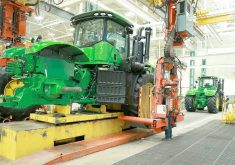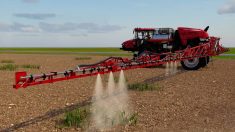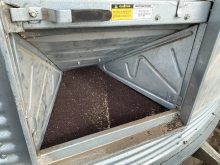Two sides Crop production and prices firing on all cylinders, but buyers are not so lucky
There’s a lot of quiet anxiety in the Alberta countryside at this time of the year — more than in most years. Anticipating the upcoming harvest tends to be top of mind with the usual angst about weather uncertainty. But this year is a little different being most of the province is looking at above-average to bumper yields in almost all crops. Only an early frost could spoil one of the best years for crop production. Recent years have seen drought or excess moisture at least somewhere in the province, but not this year. Even pasture and hay crops have done well almost everywhere.
Read Also

Farm equipment sales sector sees significant structural changes
Farming equipment sales have been declining for a number of years now, and one industry professional believes structural changes in the industry are needed to curb that trend.
For cereal and oilseed growers the outlook looks even better, thanks to the bad luck for growers in the U.S. Midwest. A widespread drought in much of that area may see as much as a 30 per cent drop in corn and soybean production. That has seen prices and futures markets for those crops rise considerably, dragging wheat, barley and canola prices higher. That’s good news for growers in Alberta — a combination of bumper crops and high prices rarely happens at the same time. No doubt their bankers and travel agents are smiling too.
The present market will also give growers a chance to cash in on those price spikes that many claimed the Canadian Wheat Board (CWB) was unwilling to act upon in the past. One recalls past horror stories of wheat selling on the spot market in the U.S. for $20 a bushel with the CWB allegedly standing by and ignoring such sales opportunities. I guess now those critics can prove those stories right and we will soon see semis full of high-priced wheat heading south across the border. And that would be good for those folks close to those markets. Interestingly, the revitalized CWB seems to be quite active in the market and far from dead.
Double-edged sword
However, true to the story of agriculture in North America, one producer’s good fortune is another’s misery. High grain prices invariably mean tough markets for those in the livestock business. It’s a double whammy actually — drought in much of the U.S. has seen livestock producers cull or dispose their herds due to lack of pasture and hay. That’s put pressure on overloaded markets and prices. Then add in high corn and barley prices and feedlot operators are either running in the red or soon will be when their supply of lower-priced hedged feed grains runs out.
That’s always a costly and painful transition, and feedlot operators begin to squeeze calf prices to reduce their losses. For hog producers it’s almost the same story. All of this is casting an ominous sense of foreboding on the livestock industry. One can just see large operators trying to juggle the numbers through hedging their input costs and futures pricing. I expect it’s not a pretty sight for calf pricing.
Cow-calf producers, at least in this province, have some relief in that pastures tend to be excellent along with decent hay crops. That could stretch marketing out if calf prices start crashing before the fall run. No doubt many are considering hanging on to to their calves and feeding them out, but I expect custom feeding charges will be a shock to many. Whether you take your beating now or later may be the only choice for those with calves for sale.
We are not there yet, but I expect government and lending agency number crunchers will be busy spinning the figures in anticipation of a livestock market crash and any possible financial payout from the various agri-support programs. That work won’t be too difficult, being they have had practice in recent years.
I might as well say it, but not to rub it in, supply management producers don’t worry about high feed prices. Their pricing system just passes on those increased costs directly to the consumer in real time — as it should. But I digress.
I can’t help but comment on reports from the urban media about impending food shortages and sky-high prices due to the American drought. That’s all conjecture at best. Most fruits and vegetables in North America are actually grown under irrigation and 40 per cent of the U.S. corn crop goes into ethanol production. A stroke of the president’s pen could redirect that production if food prices got out of hand — a distinct possibility in an election year. Those of us long in the tooth remember former president Nixon freezing meat prices when they got too high. Gosh, high commodity prices might see the consumers’ food expenditures rise from 10 per cent to 12 per cent, still the lowest in the world.
If all goes well by this time next month, there may be a bumper crop on its way to the bin, shed or pile. Well, at least part of the agriculture industry will be happy.














